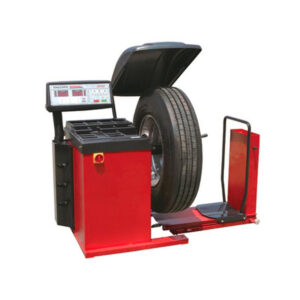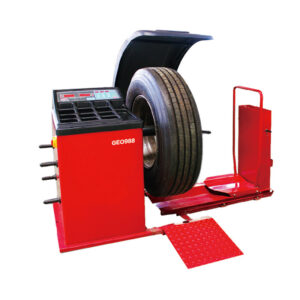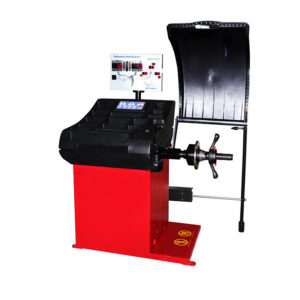Do I need to do dynamic balancing after repairing the tire?
This is a very important question. The answer is: absolutely!
When repairing a tire, the tire undergoes disassembly and assembly, which can cause the balance point to shift. Furthermore, the use of materials like patches and rubber can alter the tire’s weight distribution. Therefore, it’s best to perform a dynamic balancing after the repair.
Why is dynamic balancing necessary?
The purpose of dynamic balancing is to correct the uneven mass distribution of the wheels.
1. Tires and rims aren’t perfect: their mass distribution isn’t perfectly even. Manufacturing variations can occur.
2. Repairing a tire disrupts the original balance: Even if the tire and rim were originally balanced, the repair process (such as grinding, applying a patch, or inserting rubber strips) adds new mass to a specific location on the tire, which inevitably disrupts the previously established balance.
3. The original balancing weights are removed: When a tire is removed, the lead weights previously attached to the rim for balancing are often removed. Even if they are reinstalled, the original balance point is no longer present.
What are the consequences of not doing dynamic balancing?
If the wheel is unbalanced during dynamic rotation, a centrifugal force is generated, causing the following problems:
- Steering wheel vibration: When driving at high speeds (typically above 80-100 km/h), you may notice noticeable steering wheel vibration, affecting driving comfort and confidence.
- Body vibration: In severe cases, not only will the steering wheel vibrate, but the entire vehicle body will resonate and vibrate.
- Increased wear of the suspension and steering systems: Chronic vibration and tremors can increase wear on suspension components (such as shock absorbers and ball joints), the steering system, and bearings, shortening their service life and increasing repair costs.
- Uniform tire wear: Unbalanced wheels prevent a smooth ground contact, leading to irregular tire wear (commonly known as “tire chewing”), significantly shortening tire life.
If dynamic balancing is not done, not only will the vibration be uncomfortable, but the life of some suspension and components of the entire chassis may also be affected.
When is dynamic balancing not necessary?
- Inflation only, tire not removed: If the tire is simply inflated and not removed from the rim, dynamic balancing is not required.
- Patching without removing the tire: If the tire has only been patched externally (with a rubber strip) and the tire and rim are not removed, dynamic balancing is not affected and no additional work is required.
Balancing a tire after a repair is standard and necessary. This is for your driving safety, driving comfort, and the long-term health of your vehicle’s components. Balancing is usually included in the repair fee, so if the repair shop charges an additional fee, it’s reasonable. If the repair shop installs the tire immediately after repairing it without balancing, this is unprofessional, and you should ask them to do it.



